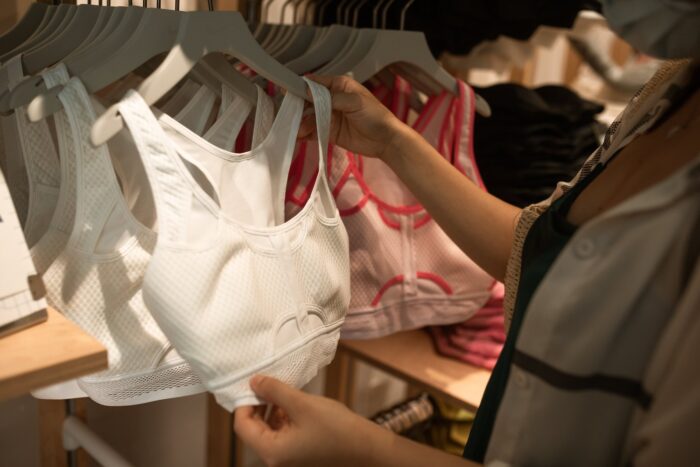Posted on November 20, 2023 | Last updated on August 5, 2024
The sportswear industry is one of the biggest contributors to waste. This is because activewear is often made using synthetic materials that give it elastic and breathable properties. Unfortunately, these materials—such as polyester, nylon, and spandex—are petroleum-based and plastic-derived. As such, their production results in greenhouse gas emissions. Additionally, when these clothes are washed, they release microplastics into the environment.
This is why many actors in the global sportswear industry are going green. They want to improve their products and processes to cater to customers who value sustainability and become environmentally responsible. Here’s how a few brands are taking the leap into a greener future for sportswear:
This post is all about green sportswear.

Photo by RDNE Stock project.
The Latest on Green Sportswear
Elevate your workout wardrobe with a touch of green! This is an eco-friendly revolution in sportswear, blending fashion and sustainability. So you can adapt to a journey towards a greener, more stylish, and conscientious active lifestyle.
Ref Active
Ref Active is the activewear component of the sustainable luxury brand Reformation. It offers sportswear for women, including shorts, skirts, and dresses.
Since 2015, the brand has been carbon neutral. Like many businesses that want to practice sustainability, Ref Active uses smart energy, recyclable materials, and a sustainable production strategy. The brand gets its electricity from 100% wind power sources to produce clothes. The fabric in its garments is made from 100% post-consumer recycled plastic bottles, reducing the amount of trash polluting the environment. Finally, Ref Active does 50% of its cutting and sewing locally in Los Angeles, reducing emissions from transportation compared to if these processes were done out of state or abroad.
Oakley
Oakley is known for sunglasses specifically designed for everything from golf to cycling and skiing. However, it also produces shoes, apparel, and accessories.
In doing so, the brand employs several sustainability measures, including using bio-acetate—an eco-friendly alternative to plastic that’s biodegradable and not made with crude oil—for a handful of its sunglasses. They’re also members of the Better Cotton movement, meaning they’re committed to sourcing 50% of their cotton from sustainable sources by 2025. This will apply to their apparel, including their hoodies. Oakley also practices green shipping: it calculates the carbon emissions the shipping process produces and offsets them via protection projects like reforestation initiatives.
Adidas
Adidas is a major sports footwear company. Aside from shoes, it also sells activewear, bags, and other sports accessories.
Since Adidas is primarily known for its footwear, its biggest sustainability efforts go into this type of apparel. In 2020 alone, the brand manufactured millions of pairs of shoes from plastic waste collected from the ocean. It was also revealed that the brand was creating shoes made out of mushroom leather, called the Stan Smith Mylo. adidas had already previously ventured into using biodegradable and plant-based materials for its products. Cutting out the use of animal products like fur is also part of the initiative to pursue vegan fashion and minimize environmental footprint. The campaign displays Adidas’ determination to make most of its apparel from sustainable and recyclable materials. In fact, this is a goal it aims to achieve by 2025: to make sure 90% of its offerings are made from sustainable materials.
PUMA
Much like Adidas, PUMA manufactures athletic shoes, activewear, and other sports accessories. However, PUMA stands out as a member of the Fashion Charter for Climate Action. This program under UN Climate Change aims to drive the fashion industry to net-zero greenhouse gas emissions by 2050.
One of the ways PUMA contributes to this goal is by working to reduce its carbon emissions from its offices, stores, and warehouses by 88% between 2017 and 2021. Another is by producing sustainable footwear. PUMA plans on having greener components in 90% of its shoes by 2025 by developing recycled options for rubber and leather—two of the most common materials used in shoes. They’ve achieved this by introducing repurposed leather in their 2021 RE: Gen collection, comprised of apparel made with recycled polyester or 20% recycled cotton and footwear using at least 20% recycled material.
The sportswear industry is well on its way to going green. Given these initiatives by major brands, we can look forward to more sustainable projects—and apparel—in the near future.
This post was all about green sportswear.






No Comments